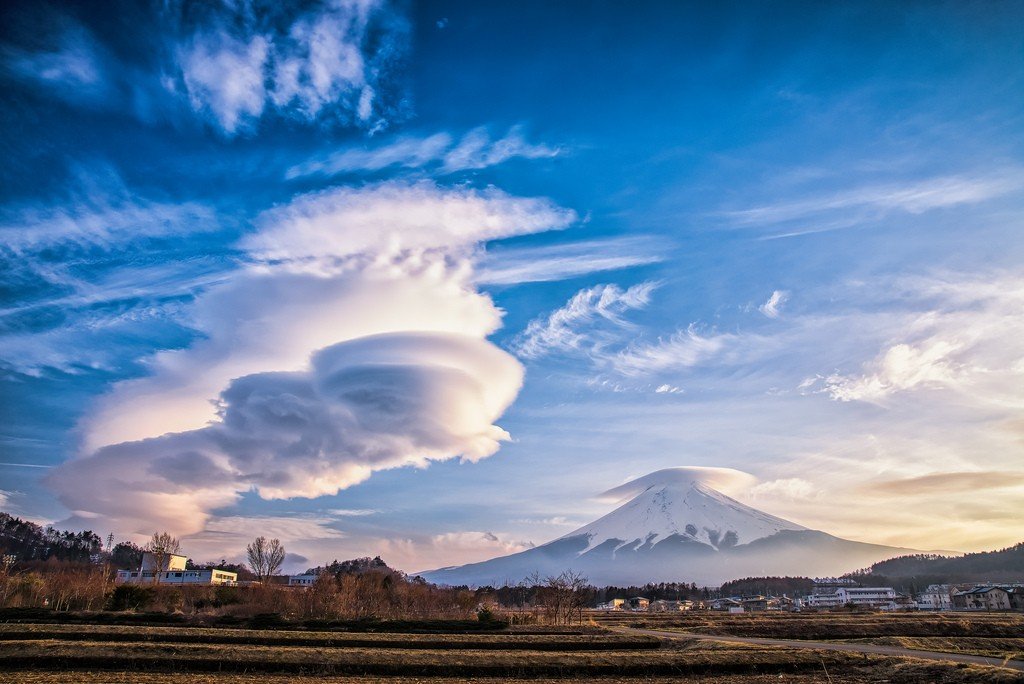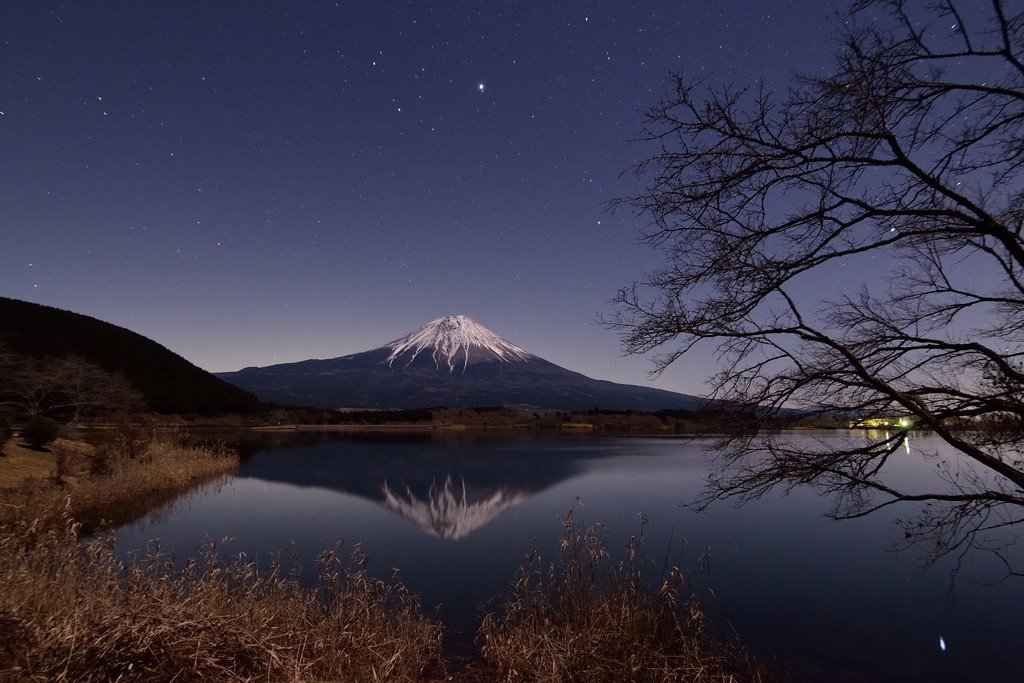Mount Fujiyama (Fuji)
Most of the world’s national symbols are man-made: the Statue of Liberty, the Eiffel Tower, the Kremlin, the Great Wall of China…. In Japan, however, it is a natural phenomenon, although thanks to its almost complete symmetry, the snow-covered cone of Fujiyama, snow-covered even in summer, is so harmoniously complex that it appears to be the work of an infinitely patient landscape designer rather than the result of volcanic activity. The majestic lonely peak rises to the heavens to a height of 3,776 meters. In short, it is simply beautiful. Here more than in any temple garden or ancient castle grounds, it becomes clear why the Japanese prefer the blurred lines between nature and art.
.
The volcano’s name is believed to come from a word from the Ainu language meaning “fire”. Fujiyama volcano last erupted in 1707, and now through its crust only occasionally burst through the puffs of steam, like the measured breathing of a sleeping giant. His sleep seems sound – fortunately for the hundreds of thousands of people who climb to the top every year. For some, the climb is a sacred act, as the mountain is revered as the abode of ancient Japanese gods. For others, it is an act of self-discipline and a way of physical purification. For others, climbing is not caused by any religious impulses, and they come here on vacation to say that they have been here, although they leave, surprisingly for themselves, with a sense of strong spiritual uplift. No tourist brochure can make Fujiyama a banal tourist attraction, and even the most satiated travelers will not remain indifferent to what appears before their eyes.










Video: Fujiyama
Climbing Fujiyama
Most begin the climb at Lake Kawaguchi, a resort area north of the mountain after about a two-hour train ride from Tokyo. The official climbing season runs from July 1 to August 27, but the mountain shelters of all ten stations on the various climbing routes are open from April to mid-November. Climbing the mountain “out of season” (especially in wet weather) is not recommended, but people do so at any time.
.
From Kawaguchi, you will take a local bus to Go-gome (“Fifth Station”) on the north slope, from where you can start the five-hour climb to the summit. You can also get here directly from Tokyo by bus from Shinjuku Bus Station; travel time is about 2.5 hours. If coming from Kyoto or Osaka, a train or bus will take you to the Fujino-miya trail along the southern slope.
.True pilgrims begin the climb around midnight, reaching the summit by sunrise. The trail is well marked, so there is no risk of getting lost. In addition, the night ascent allows you to avoid spending the night in one of the shelters with shared bedrooms (the conditions, to tell the truth, are terrible). You can stop for a rest at the seventh or eighth station. Bring warm clothes, wear comfortable shoes, a hat and gloves. You can only buy snacks from vending machines at the top, so it’s worth stocking up on provisions, and most importantly, a thermos of coffee or tea.
.In one respect, Fujiyama is like any other mountain – it is much easier to descend than to ascend. More adventurous climbers can make their way back down the volcanic sand-strewn descent to Shin-go-gome (“New Fifth Station”). You simply get on top of your backpack or piece of cardboard and slide down. From Shin-Go-gome, the bus will take you to the town of Gotemba, where you can change to other transportation.
.The vicinity of Fujiyama
Don’t limit your visit to these places to just Mt. Fujiyama’s five lakes, arcing around the foot of the mountain from the north, attract excellent fishing, boating and hiking. The largest is Yamanaka-ko. Kawaguchi-ko is the most popular, probably due to the sightseeing boats that run along the northern shore, from which you can admire the perfect mirror image of Fujiyama in the water in calm and clear weather. Sai-ko has the best trout fishing, and Shoji-ko is the smallest, most beautiful and relatively undeveloped by man. Motosu-ko is the clearest and deepest.
.Between Sai-ko and Shoji-ko lies the dense and mysterious Jukai (“Sea of Trees”) forest, notable for being easier to enter than to exit. The volcanic rock makes a magnetic compass completely useless. Many people wander here, some intentionally: the eerie Jyukai is perennially popular with suicides, and local authorities comb the forest every year for bodies that would otherwise never be found. Just south of Motosu-ko, the sparkling 26-meter-high Shiraito Waterfall is a much more pleasant picnic spot.
.